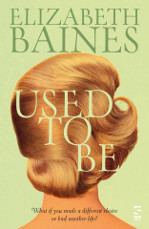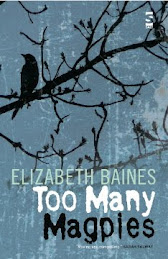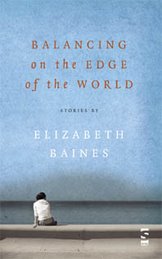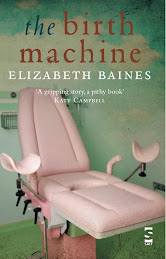 I've been so busy with my current writing project and the publication of Used to Be, that I haven't at all been keeping up with the reports of the reading group meetings. I have three to catch up with, so my memory of this, the first (at least two months off now), is perhaps a bit incomplete.
I've been so busy with my current writing project and the publication of Used to Be, that I haven't at all been keeping up with the reports of the reading group meetings. I have three to catch up with, so my memory of this, the first (at least two months off now), is perhaps a bit incomplete.Clare suggested this novel, a kind of crossover work between the novels with which Ian Banks began his career - not exactly realist, but more conventionally literary - and the science fiction which after this he began to produce simultaneously under the name Iain M Banks. Doug had said when the book was suggested that he particularly admired it, but unfortunately he was unable to attend the meeting at which we discussed it and thus champion it in the face of the more muted reaction of the rest of us.
Clare summed up the events of the book. It begins with a kind of nightmare sequence, told in the present tense and in disjointed prose with short, one-word sentences conveying crisis and confusion, featuring blood, a huge white cat, a bridge and an impact, the crashing of a car. There is then a shift to another dream-like sequence with a very different tone, past-tense, distilled, mysterious and haunting, in which a train leaves a deserted station, whistling off into the dark, and the first-person protagonist sets off too into the dark on a mysterious quest with a horse and a strangely sealed carriage. On a lonely mountain pass, with room only for the carriage, he comes face to face with an identical driver with an identical carriage whose actions mimic his own, neither of them able to pass.
We then discover that this is indeed a dream, the dream of a first-person narrator named John Orr who is recuperating after a car crash but still under the care of doctors in a strange surreal world of an endless bridge on which whole infrastructures and communities have been built. Later we will discover that, unable in fact to dream, Orr has made up the dream about the horse and carriage, along with other similar dreams, to keep his doctor happy. We follow events on the bridge, which grow increasingly surreal: Orr is demoted from his luxury room and stripped of the luxury goods with which he has thus far been provided, and sent to live among workers at a lower level; strange barrage balloons appear at the side of the bridge erected against sinister invading aircraft, and an aircraft (I think - my memory is hazy here) crashes into the bridge. There is the resultant crashing of one of the trains that constantly run through the centre of the bridge, and Orr escapes on another train only to find himself speeding and then rattling through war zones and apocalyptic landscapes, variously imprisoned and enlisted by different warring factions. About a hundred pages in, this narrative is punctuated by moments from another: the past-tense, third person account of a working-class student from Glasgow whose father once took him to look at antique steam trains and who moves to Edinburgh for university and up the social ladder, becoming an architect married to a middle-class girl from the area and leading a life of material success and fast cars. There is a third narrative, in which a seemingly different first-person narrator, speaking in demotic Glaswegian and expressing crude primitive desires, quests, with an argumentative creature on his shoulder, through the familiar but warped landscape of Greek mythology. Meanwhile, occasional sequences like the first section break through, indicating the mind of someone struggling to consciousness. As Clare said, these seemingly disparate stories come together at the end, showing that they are all indeed the dreams, alter-egos or memories of a single architect narrator, once obsessed with the construction of the Forth Railway Bridge, in a moment of crisis crashing his Jaguar (the 'huge white cat') on the road bridge, and now lying in a coma.
Most of us thought that the psychological insights of the book were interesting and clever - the mirror symbolism of the initial 'dreams' signifying the severing of the protagonist from himself (named Orr and implying an alter ego), the id and the super ego cleverly melded with the Greek myths that prefigured such notions, the protracted war struggle signifying Orr's resistance to emerging from the comfort of his coma, and the clever depiction of how our subconscious minds turn both our experiences and words into concrete symbols. However, as Trevor very strongly put it, if you get the connections at the beginning and understand that everything, apart from the realist backstory, is the consciousness of a man in a coma, as he and others of us did, then there's no narrative tension. It's hard to get engaged with the 'real-life' backstory of the architect since, presumably in a deliberate move to show the contrasting vividness of Orr's coma-induced interiority, it's told in a flat, pedestrian prose; the rest is a virtuoso authorial performance of linguistic richness and energy, but knowing it's a dream creates a certain detachment from the experience in the reader. To put it more bluntly, other people's dreams are nearly always boring, simply because they are only dreams.
Some were surprised that people have written PhDs discussing the book. Clare said that she had done some research and had discovered that there were many points of interest that must be compelling to Banks fans and PhD students, such as the fact that the surname of a woman on the bridge who is a love interest for Orr is also that of one of the original architects of the real-life Forth rail bridge, but such connections were of only passing interest to us.
One thing that did attract and intrigue both Trevor and me was the Edwardian character of some of the aspects of the bridge - the fact, most obviously, that the trains were steam engines - showing that we do not live exclusively in the present and that our imaginations are formed to some extent from the past. We both found this strikingly psychologically true.
Clare did say that she didn't feel as detached as most of the rest of us did, but, as far as I remember, Jenny said she just couldn't get on with the book at all.
Our archive discussions can be found here and a list of the books we have discussed, with links to the discussions, here













No comments:
Post a Comment